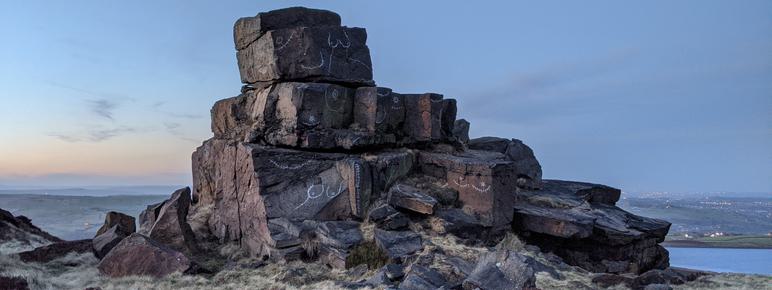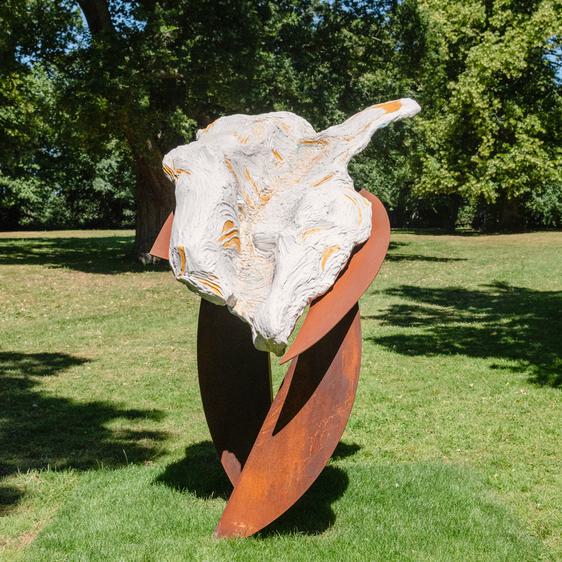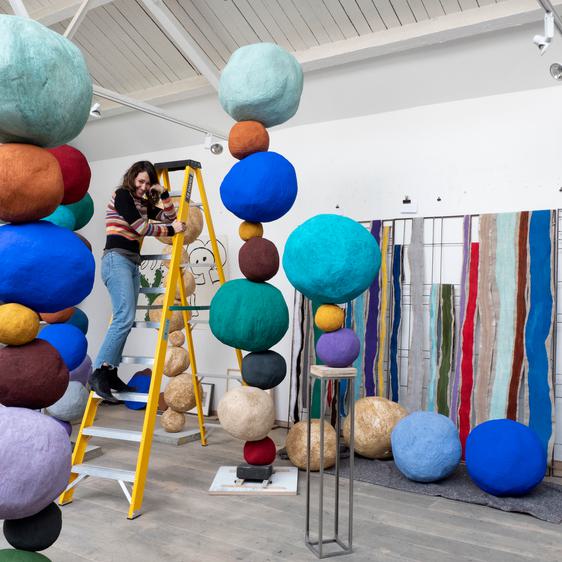
About On Queer Ground
On Queer Ground presented work by six contemporary artists, each looking at queer identity and landscape. Rural environments are frequently seen as existing in opposition to queerness, with urban spaces typically perceived as more accepting places for LGBTQIA+ people. This exhibition looked at ways in which queer artists are reconnecting with the landscapes around them. Within these places, the artists map and navigate their queer identity, seek sanctuary and connection, and disrupt traditional or prescribed ways of looking and understanding.
The works on display reclaimed a queer space within nature. Fields, coastlines and moorlands each offer space to explore elements of identity away from society’s gaze. In these solitary communions with vast terrains there also exists an inescapable suggestion of isolation and struggle. The artists focus on being within the landscape and pay close attention to feeling, movement and emotion, rather than aiming to reach summits, complete routes or navigate to landmarks. Through film, photography, sound, poetry, performance and collecting objects, they consider how our relationships with the natural world might be questioned, transformed and reconfigured.
Claye Bowler’s film, Not Much Further (2020) visualises the “burden of dysphoria” and the wait for top surgery through a walk. Bowler follows one of his usual routes, stopping to stretch, rest and eat bilberries picked on the moor. The plaster cast he carries acts as a version of himself that is changeable and fragile.
birth build shift (2022), Ro Robertson’s performance for camera, draws on the energy of the tidal zone to traverse the terrain of the queer body. Moving from the shoreline to cliff crevice, forces of erosion, the movement of the tide and shifting of rocks dissolve the boundaries between body and landscape. Elements of Robertson’s three drawings birth, build and shift (2022) were made outdoors in the same location in Cornwall. The artist’s sculpture Stone (Butch) is also on display outdoors on Hillside.
Crip Ecologies (2022) archives RA Walden’s limited involvement with the natural world due to their disability. The glass bottles contain seed pods, berries, twigs, shells, dead insects and flowers suspended in preservative solution. The work considers the connections between the fragility of the body and the vulnerability of our ecosystems.
Sadé Mica’s Right Now I’ll Just Be (2022) prompts us to consider who land belongs to, how we access it, and who feels comfortable in rural spaces. With the river, lake and trees at YSP as a backdrop, there is a sense of joy and graceful presence in Mica’s movements. As they lean and pose, their body is connected to the trees, stones and water around them.
There will be no landing at the lighthouse tomorrow (2021) by artist SHARP combines video, field recordings, spoken word and photography to connect moments in queer and personal histories via shifting landscapes. Outdoors, BEACON (without words I found myself home on our stomping ground) (2022) takes inspiration from the street action of hanging shoes from a telephone line and uses Dr. Martens boots which have become synonymous with lesbian counterculture and wider queer communities.
In you must everywhere wander 你必顧盼 (2021), Whiskey Chow combines filmed performance with CGI animation to transform her queer masculine body into an expansive fantasy landscape. Chow envisions a homeland where cooking, care and ecology are closely intertwined. In Totality (2022), she creates a queer universe that suggests eternity, where the trans-masculine body becomes a moon in an everlasting solar eclipse. This installation encapsulates Chow’s approach to queering time.
To create space for connection and expression within the Bothy Gallery and responding to the themes of On Queer Ground, YSP hosted a series of weekly drop-in Stitched Stories workshops with textile artist Andi Walker.
You might also like
More- Art Outdoors

Ro Robertson: Stone (Butch)
Robertson’s Stone (Butch) (2021) is part of a body of works exploring the terrain of the queer body in the landscape and was created by plaster casting directly in crevices in natural rock formations at Godrevy Point (St Ives Bay, Cornwall). - News

Major new public sculptures unveiled in Wakefield city centre
20 July 2023 - News

Major new public sculptures announced for Wakefield city centre
24 November 2022 - News

Major new public sculptures revealed for Wakefield, launching summer 2023
24 May 2023




